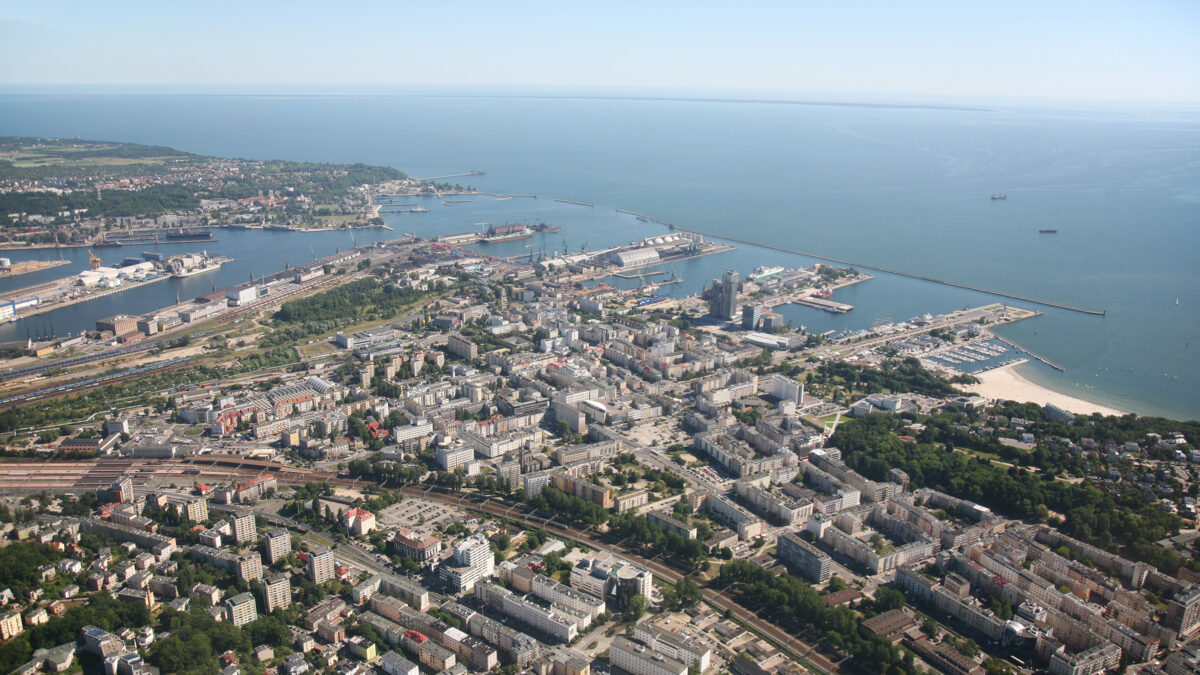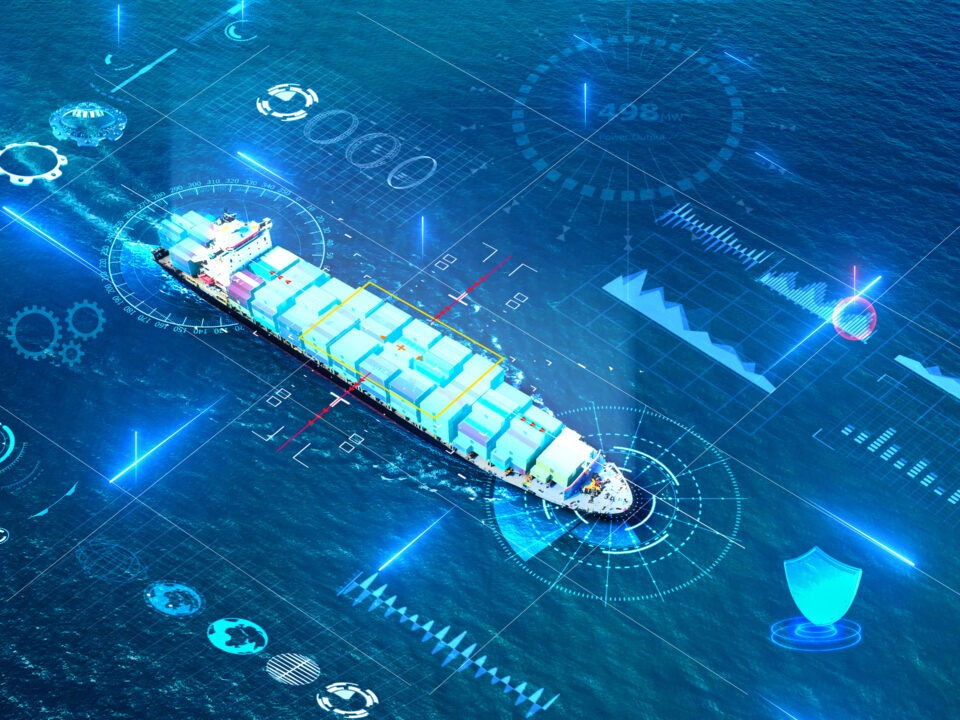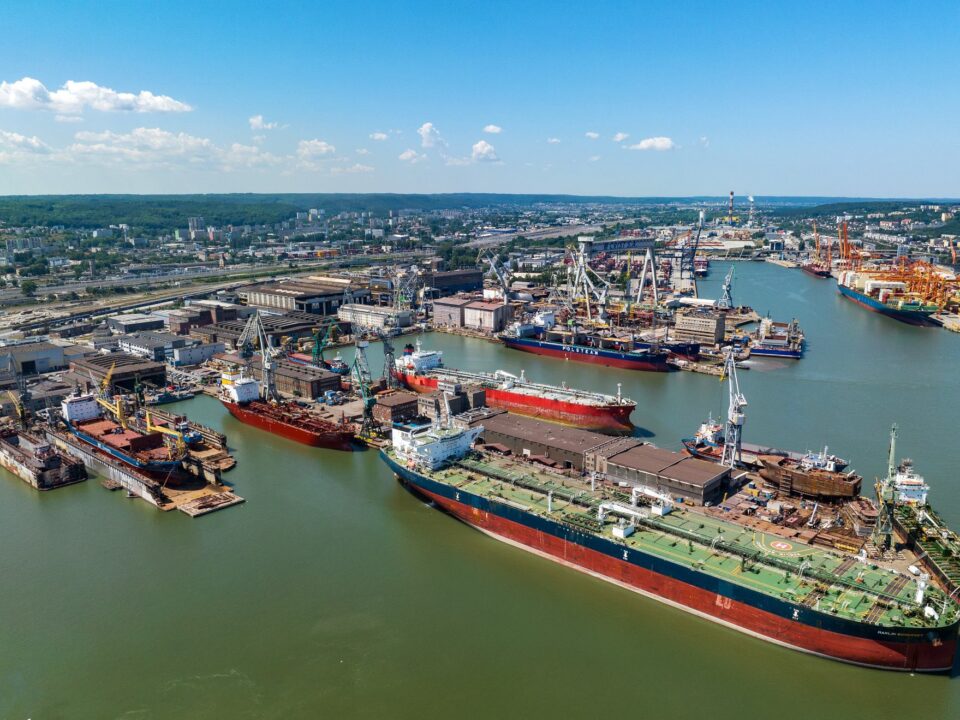
Gigaliners Are on the Horizon
30 July 2025
Fleet for the Navy
30 July 2025The “Program for the Development of Polish Sea Ports until 2030” was adopted by a resolution of the Council of Ministers on September 17, 2019. It was assumed that its implementation should ensure both efficient functioning and further rapid development of Polish seaports, contributing to the full use of their potential. The program (PDPSP) was developed in 2018 to implement the “Strategy for Responsible Development to 2020 (with an outlook to 2030)” and with the time horizon so defined. It has been recognized as one of the so-called strategic projects oriented towards providing systemic support for the development of Polish seaports. The PDPSP, as an operational and implementation document, was also prepared to facilitate the implementation of the goals of the “Transportation Development Strategy to 2020 (with an outlook to 2030)” with regard to seaports. In its current form, it also coincides with the “Strategy for Sustainable Transportation Development to 2030”. In addition to the above-mentioned formal and legal requirements for the development and adoption of such a program, there was an urgent need to prepare it, since at that time there had been no government document comprehensively devoted to the issue of port development in Poland for several years. The last document of this type was the “Strategy for the Development of Sea Ports until 2015,” adopted by the Council of Ministers on November 13, 2007. Such a long period of absence of such a document was also pointed out by the Supreme Audit Office (NIK) in its 2022 information on the results of the audit of the implementation of infrastructure investments in seaports of primary importance for the national economy.
The PDPSP, as adopted in 2019, covers 4 seaports of primary importance to the national economy: Gdańsk, Gdynia, Szczecin and Świnoujście), as well as 28 ports of non-primary importance to the national economy, including nine regional and 19 local ports and 50 harbors. The main goal of the program was stated as “striving to permanently strengthen Polish seaports as leaders among Baltic seaports.” At the same time, it was assumed that its implementation should enable Polish seaports to become key nodes of global supply chains for Central and Eastern Europe and contribute to increasing their role in stimulating the country’s socio-economic development. It is clear that this additional objective to the main objective applies only to the four largest seaports of the Republic.
With the assumption that the implementation of the investments identified in the PDPSP is extremely important to ensure the continued dynamic development of ports, as well as to maintain and strengthen their position among European ports, and should be a strong stimulus, or a kind of development multiplier for related industries and sectors, and, consequently, the entire national economy, it was established in the financial plan of this program that approximately PLN 40 billion will be allocated to all investments included therein.
A total of 47 investment projects is included in the PDPSP 2030 financial plan, including 33 entrusted to the port authorities in Gdynia, Gdańsk and Szczecin and Świnoujście, as well as 14 addressed directly to the maritime administration. In the Port of Gdynia, a total of 11 projects has been identified, including the construction of the Red Road, a public ferry terminal, as well as the start of the “Construction of the Outer Port in the Port of Gdynia” and, importantly from an environmental point of view, the preparation of port infrastructure to power ships from alternative sources, namely LNG fuel bunkering and shore power. The Port of Gdańsk Authority has been entrusted with the implementation of 6 major investment projects, including the construction of the Central Port, the reconstruction of port wharves in the inner port, and the modernization of the waterway and expansion of wharves in the inner port. In turn, the Szczecin and Świnoujście Port Authority is expected to carry out as many as 16 projects in total by 2030, including the construction of a container terminal in Świnoujście, improved rail access to both ports, the construction of deep-water wharves in the ports of Szczecin and Świnoujście, and the expansion of the Świnoujście ferry terminal. In addition, of the 14 investment projects presented for implementation to maritime offices, 8 concerned the Maritime Office in Gdynia and 6 the Maritime Office in Szczecin.
The implementation of projects took place under conditions of numerous disruptions that were difficult or impossible to foresee, such as, among others, the pandemic in the period 2020-2021, and then also the ongoing war caused by Russia’s aggression against Ukraine in 2022. To some extent, it was also affected by a slowdown in the economic growth rate of Poland and other EU countries, rising inflation, as well as the emergence of new challenges involving energy transition (RES). In general, however, given the scope of investment tasks, their nature and the complexity of the processes accompanying both the preparation and execution phases, their implementation proceeded smoothly, i.e. generally in accordance with the established schedule and, in most cases, also with the financial plan. This included, in addition to investment activities, administrative and management activities carried out by port authorities and maritime authorities. It should be mentioned, however, that such an assessment does not apply to all investments and the necessary preparatory activities undertaken to launch them on the planned dates.
An in-depth assessment of the implementation of infrastructure investments in seaports of primary importance to the national economy is provided by the NIK, developing and then releasing information on the results of the audit carried out in this regard. The first information on this subject was provided in October 2022. It reported the results of an audit of the implementation of most infrastructure investments included in the PDPSP, indicating that, among other things, the execution of plans in the investment sphere was incomplete and there were delays in their implementation. The previous audit of the Supreme Audit Office (NIK) in the area of investments made in seaports of primary importance to the national economy was conducted in 2014 and covered the years 2012-2014, i.e. the final period of the 2014-2020 financial perspective. Now that the halfway point of the PDPSP implementation period has passed, it would undoubtedly be advisable to carry out another one, covering the years 2022-2025. Its results could provide the impetus for possible corrective or supplementary actions to the set of investment projects included in the PDPSP.
One of the indicators for achieving the program’s goals and priorities, which is to increase seaport transshipments to exceed 150 million tons in 2030, is close to being realized (145.7 million tons in 2023 and 136.7 million in 2024). Despite this, the main goal achievement indicator setting the share of Polish ports in the Baltic Sea region port market at 59.28% in 2030 is very far from this value. Preliminarily assuming that the Baltic ports in 2024 handled a total of 904 million t (+1.5%), and the 10 largest of them 510 million t, the share of Polish seaports in their turnover was 15.1% and 26.8%, respectively. It should be noted here that Poland’s largest seaports are among the 10 Baltic ports with a combined market share of 56%. And so: Gdańsk is ranked 2nd (8th among EU ports), Szczecin and Świnoujście 7th, and Gdynia 9th. The financial effects of their development are also noteworthy.
In 2024, Polish seaports made a net profit of PLN 551.7 million and this was, despite a decline in transshipments of almost 10 million tons, higher than in 2023 by as much as 26%. The Port of Gdańsk generated a net profit of PLN 263.9 million (24%), the Port of Gdynia PLN 140.2 million (32%), and Szczecin-Świnoujście PLN 147.7 million (23%). In addition, year after year, Polish ports are also generating more and more revenue for the state budget from VAT, customs and excise taxes. In 2022, they amounted to about PLN 58 billion, although just four years ago they were at about PLN 40 billion. Thus, they currently account for about 10% of state budget revenues.
The article was written in collaboration with Namiary Na Morze i Handel – a biweekly magazine providing expert information on the most important events and issues in the Polish maritime economy.





